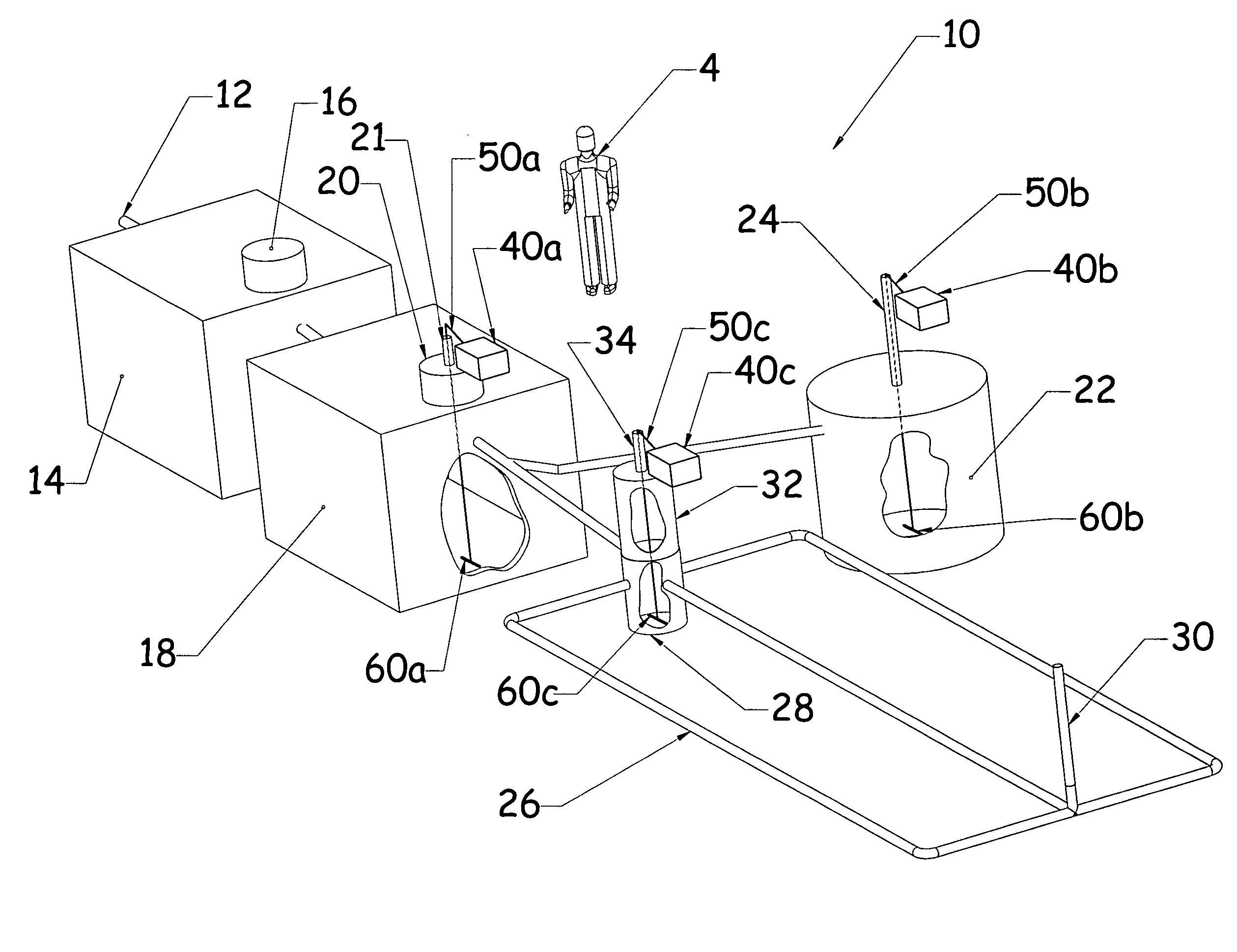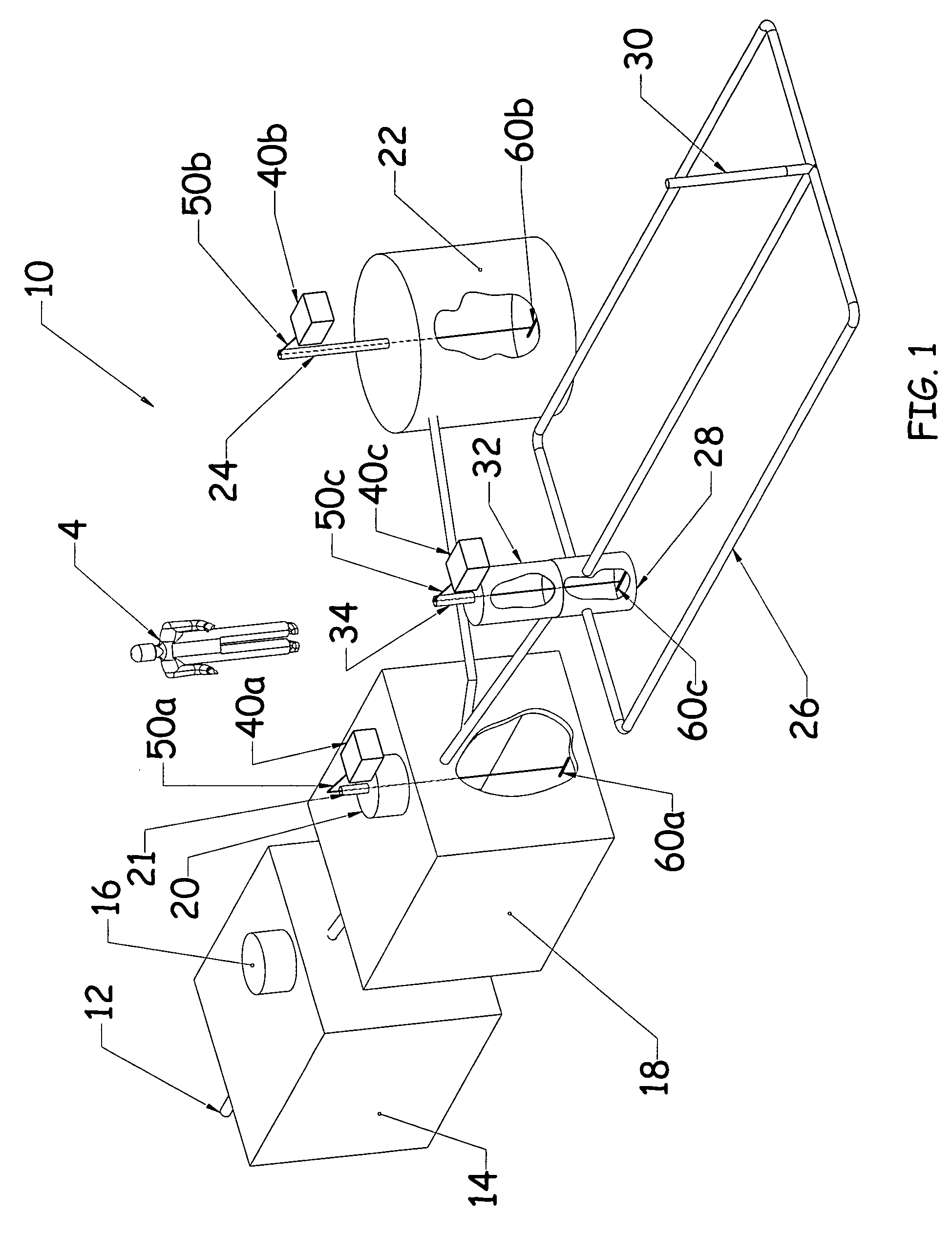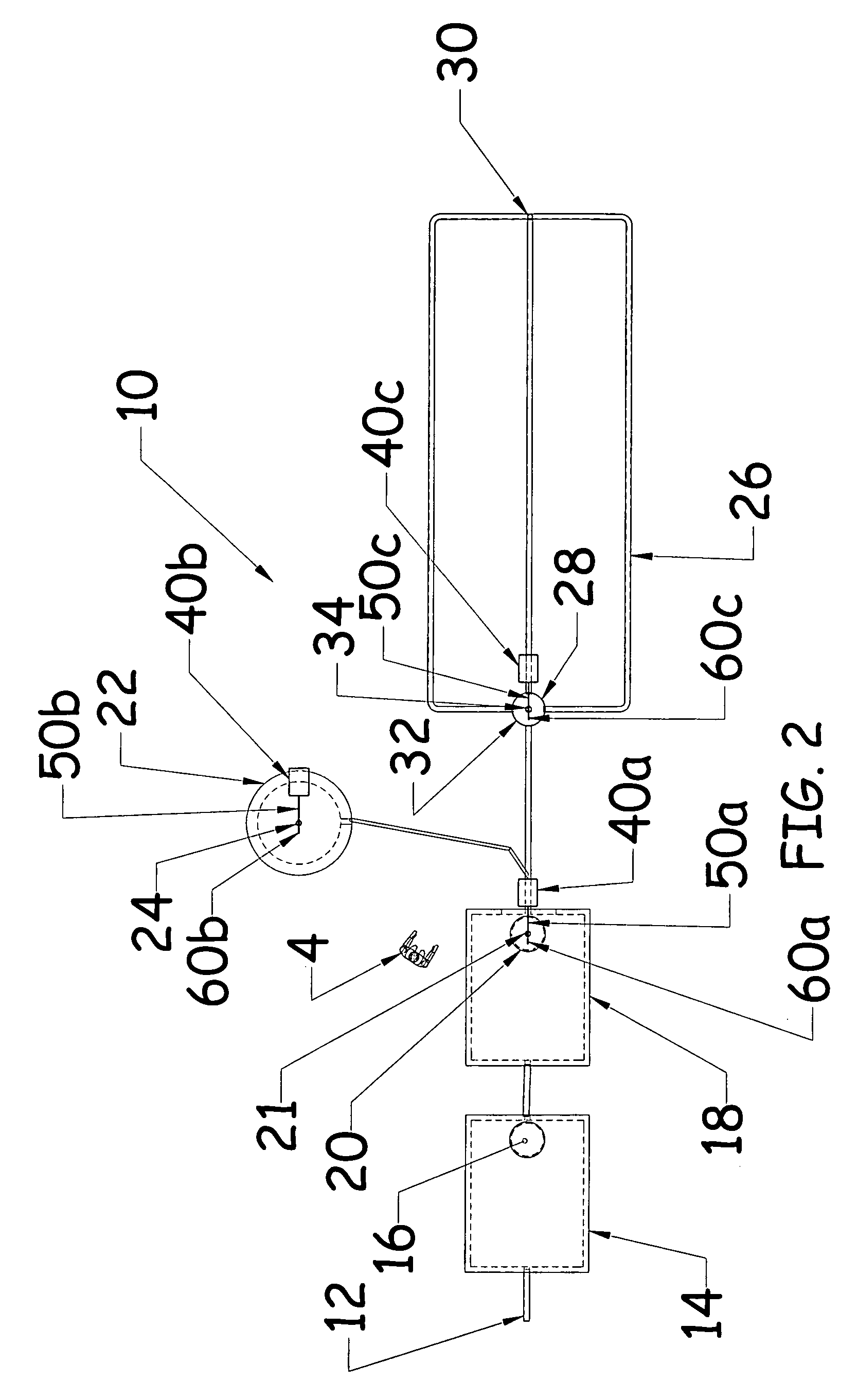Septic system remediation method and apparatus
- Summary
- Abstract
- Description
- Claims
- Application Information
AI Technical Summary
Benefits of technology
Problems solved by technology
Method used
Image
Examples
Embodiment Construction
[0023]Reference is now made to the drawings wherein like numbers refer to like elements throughout. FIG. 1 illustrates a septic system, generally identified 10, with which the apparatus and method of the present invention is intended to be used. It is to be understood, however, that the precise configuration of the system is not a limitation of the present invention and could assume any number of sizes and layouts. The septic system 10 shown is for illustration purposes only. A six foot tall man 4 is included for relative size reference as well.
[0024]As shown in FIG. 3, the septic system 10 lies, for the most part, below earth grade 2. The system 10 includes a pipe 12 leading from a home or building (not shown) which pipe 12 is connected to a first septic tank 14. The first tank 14 may or may not have a vented cover. As shown, the first tank 14 includes a riser 16. The first tank 14 is, in turn, connected to a second tank 18. This second tank 18 may or may not have a vented cover as...
PUM
| Property | Measurement | Unit |
|---|---|---|
| Pressure | aaaaa | aaaaa |
| Area | aaaaa | aaaaa |
Abstract
Description
Claims
Application Information
 Login to View More
Login to View More - R&D
- Intellectual Property
- Life Sciences
- Materials
- Tech Scout
- Unparalleled Data Quality
- Higher Quality Content
- 60% Fewer Hallucinations
Browse by: Latest US Patents, China's latest patents, Technical Efficacy Thesaurus, Application Domain, Technology Topic, Popular Technical Reports.
© 2025 PatSnap. All rights reserved.Legal|Privacy policy|Modern Slavery Act Transparency Statement|Sitemap|About US| Contact US: help@patsnap.com



